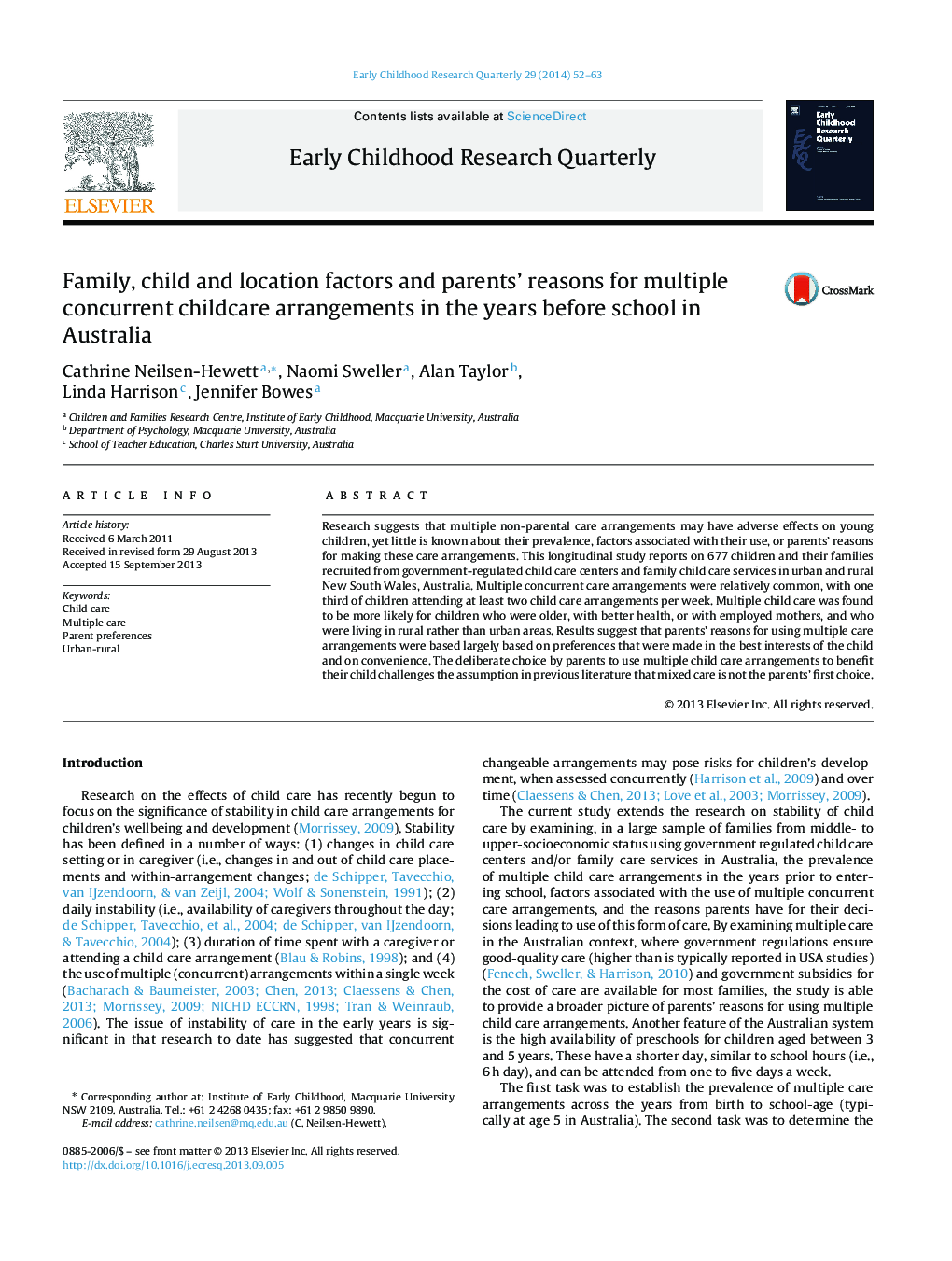| کد مقاله | کد نشریه | سال انتشار | مقاله انگلیسی | نسخه تمام متن |
|---|---|---|---|---|
| 353829 | 618947 | 2014 | 12 صفحه PDF | دانلود رایگان |
• We identify factors influencing multiple concurrent care use in prior-to-school years.
• Multiple child care was more likely for children who were older, with better health, or with employed mothers, and living in rural rather than urban areas.
• Parent reasons for multiple concurrent care appeared to be based on best interests of the child and parental convenience.
Research suggests that multiple non-parental care arrangements may have adverse effects on young children, yet little is known about their prevalence, factors associated with their use, or parents’ reasons for making these care arrangements. This longitudinal study reports on 677 children and their families recruited from government-regulated child care centers and family child care services in urban and rural New South Wales, Australia. Multiple concurrent care arrangements were relatively common, with one third of children attending at least two child care arrangements per week. Multiple child care was found to be more likely for children who were older, with better health, or with employed mothers, and who were living in rural rather than urban areas. Results suggest that parents’ reasons for using multiple care arrangements were based largely based on preferences that were made in the best interests of the child and on convenience. The deliberate choice by parents to use multiple child care arrangements to benefit their child challenges the assumption in previous literature that mixed care is not the parents’ first choice.
Journal: Early Childhood Research Quarterly - Volume 29, Issue 1, 1st Quarter 2014, Pages 52–63
